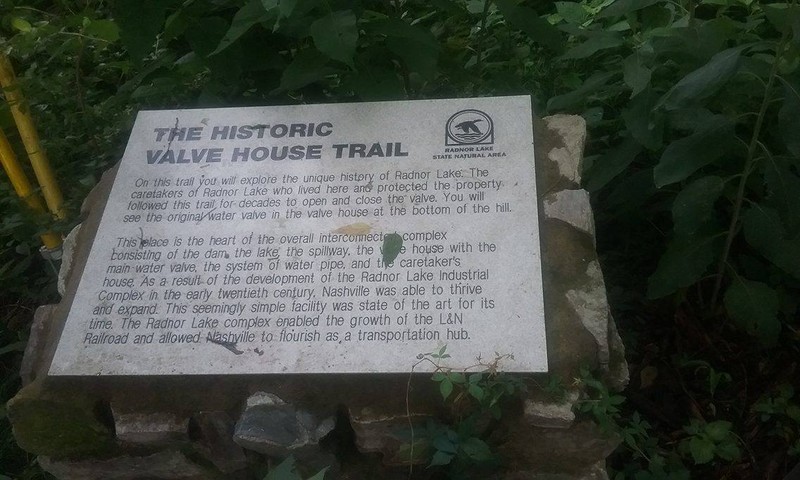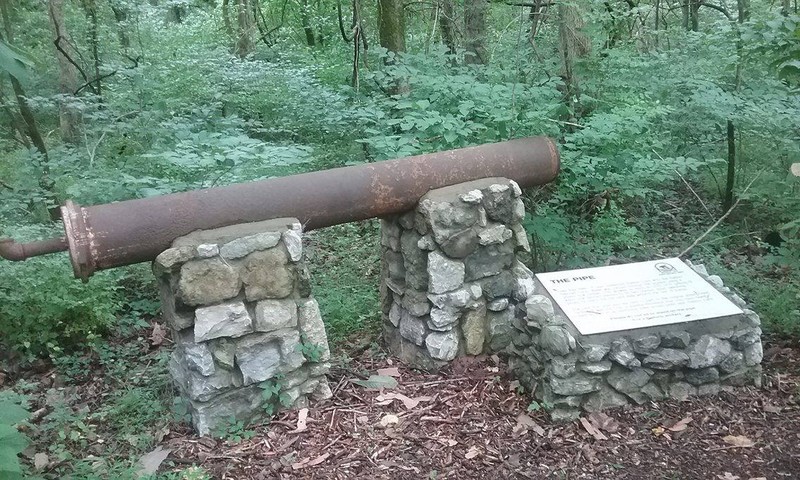Radnor Lake State Park
Introduction
Text-to-speech Audio
Radnor Lake State Park is a 1,332-acre park and protected natural area that maintains over 6 miles of hiking trails in a shaded, ecologically diverse setting. Nature enthusiasts at the park have observed herons, owls, water fowl, turtles, frogs, mink, and otter, in addition to numerous plant species. The Park is Tennessee's first Natural Area, earning this status in 1973 thanks to public outcry against plans to develop it.
The Historic Valve House Trail opened in 2011 to walk visitors through the history of the area. From 1914 to 1917, Louisville and Nashville Railroad Company had a dam constructed on Otter Creek. This dam led to the creation of Radnor Lake, which supplied water for L&N's steam locomotives.
Images
Panel introducing the Historic Valve House Trail: "The Radnor Lake complex enabled the growth of the L&N Railroad and allowed Nashville to flourish as a transportation hub."

Cast-iron pipe: more than 4 miles of underground pipes carried water (up to 1,000,000 gallons daily!) from Radnor Lake to the railroad yards. No pumps were needed, as the system worked using gravity.

Backstory and Context
Text-to-speech Audio
Visitor Information
Stop by the Walter Criley Visitor Center on the west end of the park to learn more about the area. Since 2015, the Barbara J. Mapp Aviary Education Center has been open to the public, introducing visitors to birds of prey such as bald eagles and great horned owls. The Lake Trail is accessible to people with all-terrain wheelchairs. Pets, jogging and bicycles are permitted only on the Otter Creek Road trail.
Stop by the Walter Criley Visitor Center on the west end of the park to learn more about the area. Since 2015, the Barbara J. Mapp Aviary Education Center has been open to the public, introducing visitors to birds of prey such as bald eagles and great horned owls. The Lake Trail is accessible to people with all-terrain wheelchairs. Pets, jogging and bicycles are permitted only on the Otter Creek Road trail.
Sources
"Radnor Lake State Park." Tennessee State Parks. Accessed July 07, 2017. http://tnstateparks.com/parks/about/radnor-lake.
Additional information retrieved from the interpretive panels along the Historic Valve House Trail.
Additional information retrieved from the interpretive panels along the Historic Valve House Trail.
